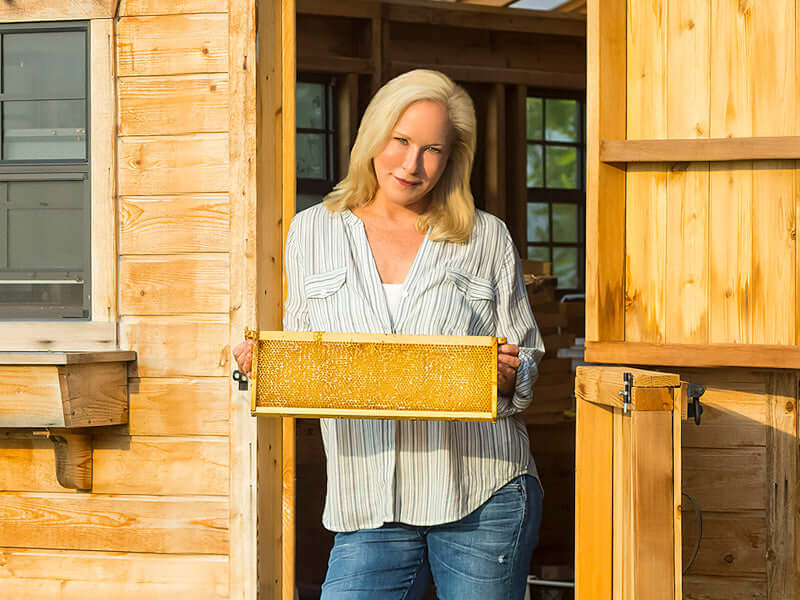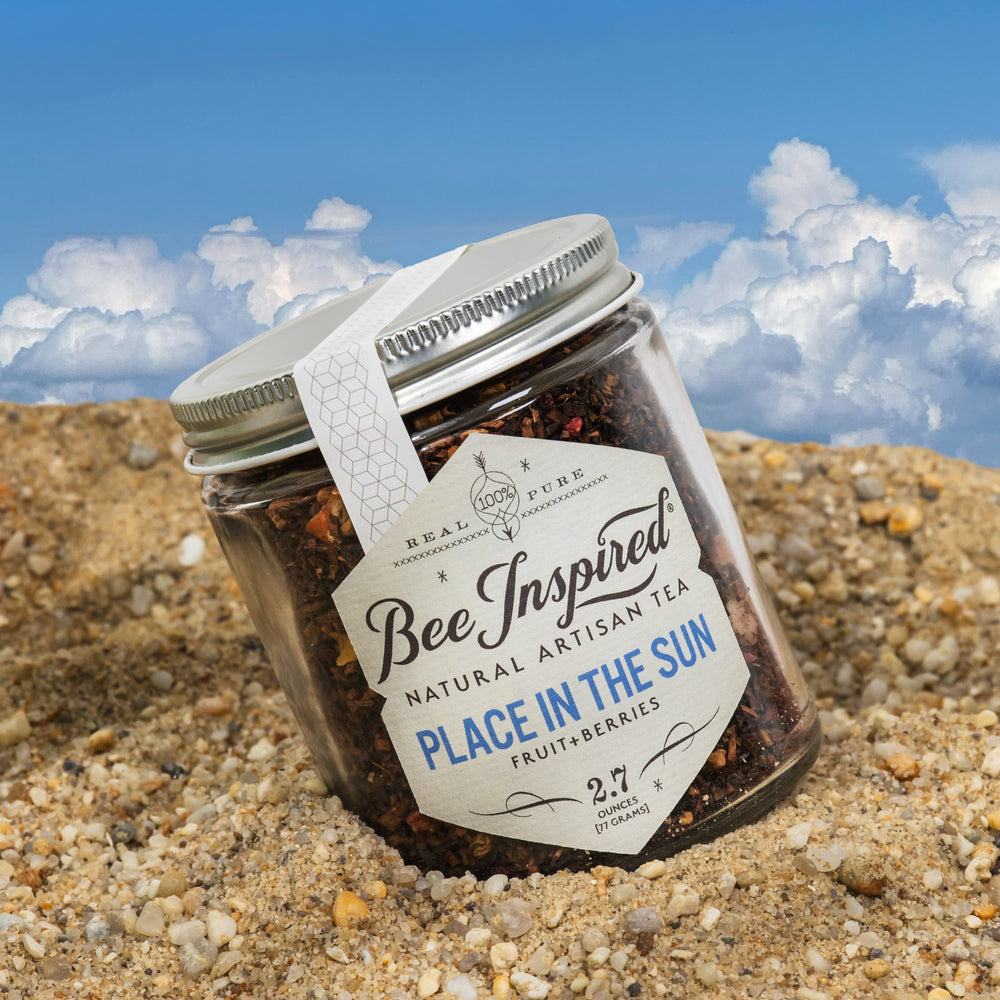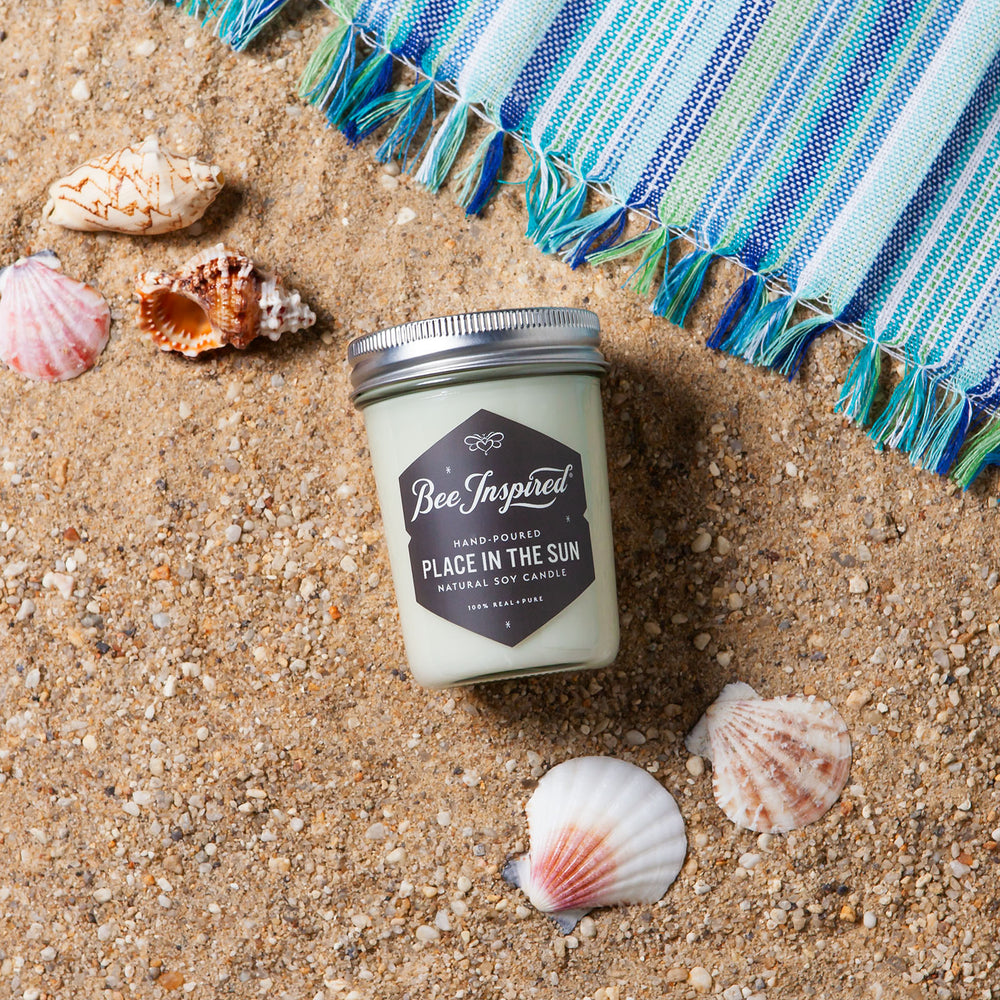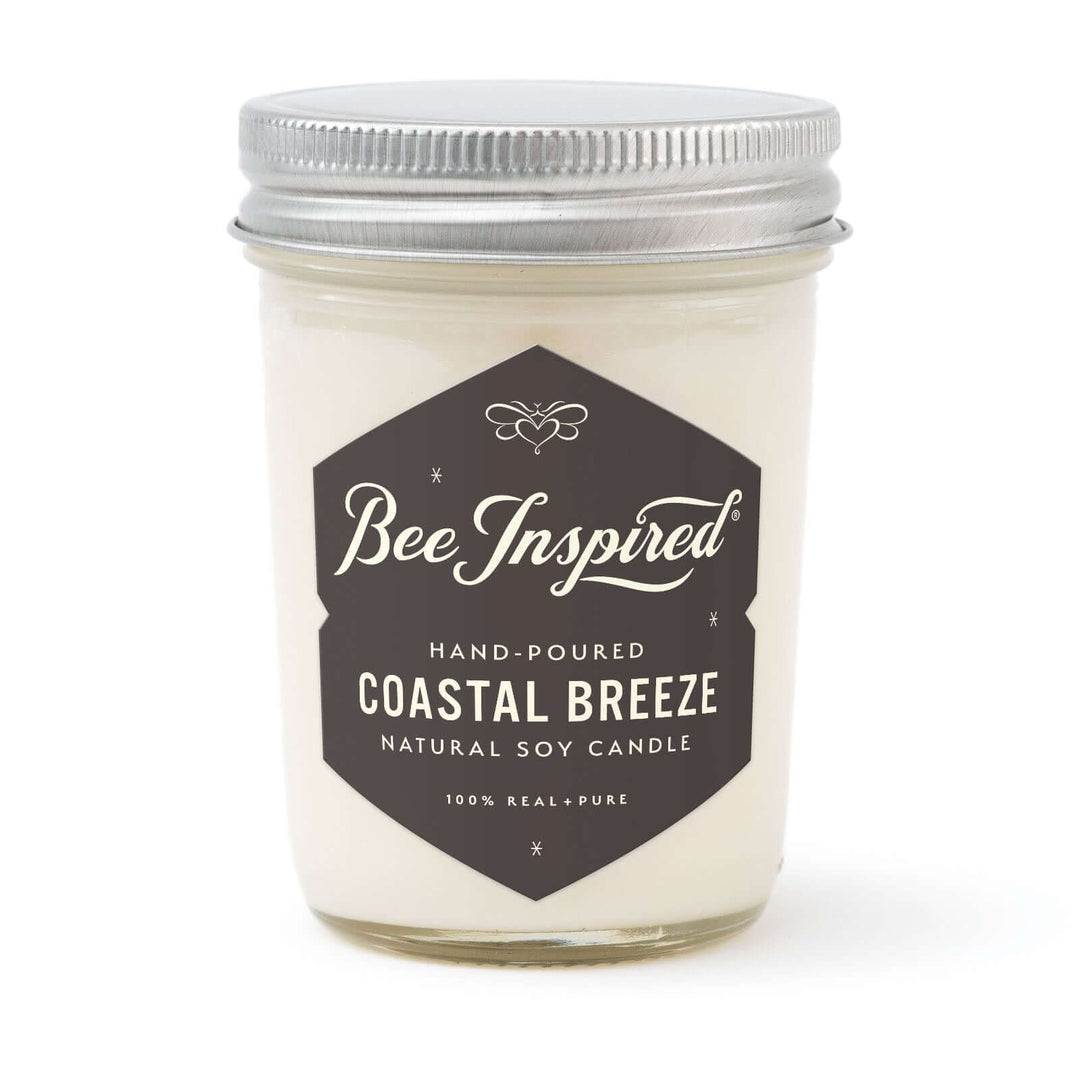As the northern hemisphere welcomes the first day of summer, it's the perfect time to gather with friends and family to celebrate midsummer with an unforgettable summer solstice celebration on Maryland's Eastern Shore. This midsummer tradition is observed with various local celebrations and rituals, adding a unique cultural touch to the festivities that have been practiced for thousands of years around this special celestial event.
Our Summer Radiance Collection will help you live seasonally
With the sun reaching its highest point in the sky during this longest day and nature flourishing in peak abundance, pause to appreciate the beauty of your surroundings. From pristine white-sand beaches and picturesque patios to vibrant lighthouses illuminating miles of rolling waters, this stunning region offers countless moments of delight during the midsummer season. Plan a special gathering filled with lasting memories as you explore all this incredible corner of Maryland has to offer when celebrating the longest day of the year.

The Longest Day of the Year
The summer solstice, also known as the northern summer solstice, is the longest day of the year in the Northern Hemisphere, typically falling on June 20, 21, or 22. This celestial event marks the official start of summer, a time when the sun reaches its highest point in the sky. As the Earth orbits the sun, its rotational axis tilts, creating this moment of maximum daylight. While the Northern Hemisphere basks in the sun's extended presence during this special day, the Southern Hemisphere experiences the winter solstice, marking their shortest day of the year.
The summer solstice is a time of celebration and joy across many cultures around the world. People gather to watch the sunrise, light bonfires, and enjoy outdoor feasts, embracing the warmth and light that this day brings. From ancient festivals to modern gatherings, the solstice is a moment to honor the sun's power and the abundance of life it supports.
Ancient civilizations placed great importance on this celestial event, often building monuments aligned with the sun's position on this special day. These architectural marvels demonstrate how cultures throughout history have revered and celebrated the solstice as a pivotal moment in the annual calendar.

The Summer Solstice Provides the Earliest Sunrise
The summer solstice occurs when the Earth's tilt toward the Sun reaches its maximum, creating the longest day of the year in the Northern Hemisphere. This celestial event happens due to the tilt of the Earth's rotational axis. The maximum tilt, approximately 23.5 degrees toward the Sun, results in the longest day and shortest night of the year, highlighting the direct angle of sunlight received in the Northern Hemisphere at this time.
This phenomenon happens twice annually (once in each hemisphere) and marks the official start of astronomical summer. The word "solstice" derives from the Latin "solstitium," meaning "sun stands still," referring to the sun's apparent pause before changing direction.
In the Northern Hemisphere, the summer solstice falls in June, while December brings this event to the Southern Hemisphere. This phenomenon not only gives us our longest day but symbolizes the peak of the Sun's journey in the earth's orbit—a time to honor the light and warmth that sustains all life.
During this special time, many people feel a natural increase in energy and vitality, corresponding with the sun's maximum strength. This has led to numerous traditions focused on harnessing this powerful solar energy for healing, growth, and spiritual renewal.

Celebrate Midsummer's Day: The June Solstice
Midsummer's Day (also known as St. John's Day) is traditionally celebrated on June 24th in the Northern Hemisphere, marking the midpoint between the summer solstice and the autumnal equinox. Saint John the Baptist is significant during this time, with many cultures honoring his birth through customs that involve lighting bonfires and various rituals connected to the longest day.
This global tapestry of traditions highlights humanity's universal desire to acknowledge nature's cycles and the changing seasons marked by the solstice. John the Baptist's association with Midsummer's Day underscores the cultural and religious importance of these celebrations. Living seasonally aligns our daily lives with Earth's natural rhythms, honoring the cycles of light and darkness marked by the summer and winter solstices, while embracing the unique energy each season brings.
In many European countries, midsummer is celebrated with elaborate folk costumes, traditional music, and special foods that have been part of local heritage for centuries. These colorful festivities strengthen community bonds and pass down cultural knowledge from one generation to the next.

Create a Midsummer Eve party
The Midnight Sun
One of the most enchanting features of the summer solstice is the midnight sun, a phenomenon where the sun remains visible at midnight in the Northern Hemisphere. This occurs because the Earth's rotational axis is tilted at an angle of about 23.5 degrees, allowing the sun to stay above the horizon for a full 24 hours in regions within the Arctic Circle during the longest day.
The midnight sun during this special time draws countless visitors to destinations like Norway, Sweden, and Alaska, where they can witness this natural wonder firsthand. It's a magical experience to see the sun's rays illuminating the landscape even at midnight, creating an ethereal glow. Many midsummer festivals incorporate the midnight sun into their celebrations, with people gathering to watch the sun at its zenith and revel in the longest day of the year.
Photographers from around the world travel to northern regions during the solstice to capture the unique lighting conditions that occur when the sun barely dips below the horizon. These images often showcase landscapes bathed in golden light at times when darkness would normally prevail.

Day of Summer
Often referred to as the "day of summer," the summer solstice marks the beginning of the season with the earliest sunrise and the longest stretch of daylight. This day is filled with sunlight and warmth, inviting people to spend time outdoors and soak in the sun's energy during midsummer celebrations.
Cultures around the world celebrate this special day with a variety of activities. Families and friends gather to play games, have picnics, and enjoy water sports, making the most of the extended daylight. The solstice is also a time for spiritual reflection and renewal, with many using this occasion to set new goals and intentions for the coming year. In some countries, midsummer is recognized as an official holiday, allowing people to fully embrace and celebrate the longest day of the year.
Many people feel a natural surge of creativity during this period. Artists, writers, and musicians often find inspiration in the abundant light and energy that characterizes this special time of year, creating works that capture the essence of midsummer.

Summer Solstice Traditions
Traditions from different cultures center on common themes for the solstice: celebrating the sun's power, fostering love and romance, honoring the earth's abundance, and gathering for communal festivities as a traditional practice during this special time.
Midsummer's Eve, the evening before Midsummer Day on June 24, holds significant cultural and historical importance, marked by various festivities and rituals that have been practiced for generations.
June has historically been the most popular month for weddings, considered a blessing since ancient times and often connected to solstice celebrations. Interestingly, June's full moon is called the "honeymoon"—a name originating from pagan groups who made special mead for their midsummer celebrations during summer's first month.
One of the most widespread rituals across cultures is lighting bonfires and dancing to celebrate the solstice. These fires honor the heat and sunshine provided by the sun on its longest day. Participants often sing songs around the bonfires during festivities, enhancing the communal and joyful atmosphere. In many traditions, especially in Sweden and Latvia, people wear flower wreaths as part of the midsummer celebrations, symbolizing purity and fertility. Ancient peoples recognized this time for its abundant energy and bountiful crops, making sun worship particularly fitting as the season began.
The practice of staying awake throughout the short night of the solstice is common in many northern European traditions. People believe that the magical energy of midsummer night brings good fortune to those who can greet both sunset and sunrise on this special day.

Find sweet honey gifts perfect for summer weddings
Celebrating the Solstice at Home
Here are some meaningful ways to celebrate this year's summer solstice at home with family and friends, creating your own special traditions that honor this important celestial event:
Outdoor Picnic Celebration
Gather your friends and family for a picnic in a local park or your backyard to celebrate the longest day. Enjoy seasonal fruits, fresh salads, and light snacks that represent the abundance of summer. To enhance the festive atmosphere of your midsummer celebration, consider playing live music during the picnic, creating a vibrant and joyful environment for everyone to enjoy.
Decorating your picnic area with symbols of the sun and summer flowers can create a beautiful setting for your solstice gathering. Yellow and orange colors traditionally represent the sun's energy during midsummer celebrations and can be incorporated into your tablecloths, napkins, and other decorative elements.

Craft Seasonal Flower Crowns
Flower crowns are a beautiful and traditional way to celebrate the summer solstice. Use fresh flowers from your garden or a local florist to create your own unique crown for your festivities. This activity is perfect for both children and adults to connect with nature during this special time.
The tradition of wearing flower crowns during midsummer dates back to ancient times, when they were believed to harness the magical powers of plants at their peak potency. Different flowers were chosen for their symbolic meanings and healing properties, making each crown a personalized talisman for the wearer.
Traditional Bonfire Gathering
Bonfires are a central part of many solstice celebrations around the world. Gather around the fire with your loved ones, share stories, and enjoy the warmth of the flames on midsummer evening. You can also dance night long around the bonfire, embracing the ancient traditions and the magic of this special night.
In many European traditions, people would leap over small midsummer bonfires for good luck and purification. While safety should always come first, this demonstrates how fire has long been connected to transformation and renewal during solstice celebrations throughout history.

Sunrise Observation
One of the most iconic ways to celebrate this special day is to watch the sunrise. Find a good vantage point, such as a hill or a beach, and welcome the longest day of the year as the sun rises above the horizon. This quiet moment of contemplation connects you to countless generations who have observed this same celestial event.
Many people choose to meditate or practice yoga as the sun rises on the solstice, believing that the first light of the longest day carries special energy and power. This mindful practice helps to center the spirit and set positive intentions for the coming season of light and growth.
Solstice Yoga and Meditation
The summer solstice is a time of reflection and renewal. Take a moment to meditate or practice yoga, focusing on your intentions for the coming months. This can be done alone or with a group, in a quiet space indoors or outside in nature during your midsummer observance.
Many yoga communities around the world hold special solstice events, including the famous gathering in Times Square where thousands of yogis practice together. This time is seen as an ideal moment to harness solar energy and channel it into personal growth and spiritual development.
Morning Dew Walk
Walking in the morning dew is a traditional practice believed to promote good health and wellness during midsummer. During various solstice festivals, participants often engage in barefoot walking or rolling in the grass, embodying ancient agrarian traditions. This simple yet meaningful activity can help you connect with nature and start your day with a refreshing experience on the longest day.
In European folklore, the dew collected on the morning of the solstice was believed to have healing and beautifying properties. Young women would wash their faces with midsummer dew, believing it would enhance their beauty and bring good fortune in love during the coming year.

Sun-Themed Foods and Drinks
Create a special menu featuring sun-shaped and golden-colored foods to honor the solstice. Round breads, sunflower seeds, yellow fruits, and honey-based treats all symbolically connect to the solar energy celebrated during this time. Adding edible flowers to your midsummer feast not only creates beautiful presentation but also connects to traditional herbal practices associated with the solstice.
Consider brewing a special tea with herbs that reach their peak potency during this time, such as St. John's Wort, chamomile, and lemon balm. These plants have long been associated with midsummer celebrations and are believed to capture the sun's healing energy when harvested on or near the longest day.

Place in the Sun Tea contains the flavors of summer
Farm-to-Table Feast
Celebrate Earth's bounty at the solstice with locally-sourced ingredients from farmers' markets. Try these menu ideas for your midsummer feast:
Honey Sangria: A refreshing cocktail with fruity flavors and honey sweetness, perfect for toasting the longest day.
Fish Tacos: Light and flavorful with tender grilled fish and zesty toppings, representing the bounty of summer waters during this special time.
Grilled Brisket: Juicy and smoky, celebrating outdoor cooking traditions of midsummer.
Summer Salsa: A vibrant medley of fresh tomatoes, peppers, and herbs at their peak during the solstice season.
Summer Tomato Salad: Ripe tomatoes enhanced with honey, showcasing summer's sweetness during the longest day.
Grilled Summer Vegetables with Honey Balsamic Dressing: A perfect balance of smoky and sweet flavors for your solstice celebration.
Lemon Lavender Honey Cake: A fragrant dessert combining zesty lemon with lavender and honey, traditional flavors of midsummer.
Homemade Bumbleberry Pie: A sweet treat enhanced with golden honey, representing the abundance of the solstice season.
Solstice Journaling and Intention Setting
The summer solstice is an ideal time for reflection and setting intentions for the coming seasons. Create a special journal entry on this day, documenting your thoughts, hopes, and dreams as the sun reaches its zenith. Many traditions view the solstice as a powerful moment for manifestation work, when the boundary between worlds is thin and intentions can be clearly sent into the universe.
Consider writing down what you wish to cultivate in your life during the coming months, and also what you would like to release or let go of. Some people choose to safely burn these intentions in their midsummer bonfire as a symbolic act of transformation and commitment.
Nature Connection Ritual
Spend time connecting deeply with nature during the solstice by taking a mindful walk in a natural setting. Observe the plants at their peak growth, listen to bird songs, and pay attention to the insects and animals that are active during this abundant time. Creating a nature mandala with found objects like flowers, leaves, and stones can be a beautiful way to honor the earth's gifts during the longest day of the year.
Many people choose to leave offerings for nature spirits during the solstice - small amounts of honey, milk, or bread left in natural settings as a gesture of gratitude for the earth's abundance. This ancient practice maintains the reciprocal relationship between humans and the natural world that has been celebrated at midsummer for thousands of years.
Life on the Eastern Shore During Solstice
On Maryland's Eastern Shore, the sun rises early and sets late during summer's height, especially around the solstice. Thanks to vast open waterways, we often enjoy unobstructed views of sunrises and sunsets during this magical time of year. During the longest day, when the Northern Hemisphere is tilted toward the Sun, sunlight falls at a steeper angle, resulting in longer daylight hours and a noticeable seasonal lag. We experience about 15 hours of daylight—significantly more than the 9 hours we receive during winter's darkest days.
During these warm months and long days surrounding midsummer, Chesterhaven Beach Farm comes alive with natural beauty. Near the house, expansive areas of yarrow, mints, salvias, and coneflowers begin blooming in May and June, providing bees with abundant food sources, especially when combined with surrounding meadows and wooded areas. Native flowers like butterfly weed and coneflowers start blooming close to the solstice itself, their fiery, vibrant colors seemingly connected to the sun's white-hot heat. These blooming flowers symbolize new life, much like the mock weddings held during Slinningsbålet in Norway, celebrating the transition from winter to summer.
The waters of the Chesapeake Bay reach their peak clarity and warmth in the weeks following midsummer, making this the perfect time for swimming, sailing, and fishing along the Eastern Shore. Local watermen harvest blue crabs and prepare for the oyster season, continuing traditions that have sustained this region for generations through each seasonal cycle.
Bird watchers find this period particularly rewarding on the Eastern Shore, as many migratory species are nesting and raising their young. The extended daylight hours provide ample opportunity to observe these birds in their natural habitats, from majestic ospreys and herons to colorful warblers and bluebirds.

The Fun in the Sun Set is perfect for summer
Summer Solstice Around the World
Solstice celebrations are a global phenomenon, with each culture adding unique elements to their observances of this special day. In the Northern Hemisphere, the longest day features vibrant festivals, bonfires, and sun-welcoming rituals that have been practiced for thousands of years. Many cultures view this time as perfect for renewal, rebirth, and honoring life's cycles, often commemorating the exact moment with ceremonies that bring communities together.
The summer solstice is widely celebrated across different cultures, emphasizing its importance in both cultural heritage and social interactions throughout human history. At Stonehenge, the sun aligns perfectly with the ancient monument during this astronomical event, drawing visitors from around the world to witness this spectacular alignment that connects the structure to solar movements.
The cultural significance of midsummer stretches back to ancient times, with many civilizations recognizing its profound importance in the annual cycle. This celestial event was frequently linked to life, death, and rebirth cycles, marked with rituals ensuring land fertility and the sun's return. Ancient civilizations designed monuments and structures with the sun's annual cycles in mind, particularly those that align with solstices and equinoxes. Throughout history, midsummer has been a time for spiritual reflection, communal feasts, music, and dance.
In Scandinavian countries, midsummer (known as Midsommar) is one of the most important holidays of the year, celebrated with maypole dancing, flower garlands, and traditional foods. These festivities often last several days and are deeply embedded in cultural identity.
Native American tribes across North America have their own rich traditions surrounding the longest day, often involving sacred ceremonies, storytelling, and dances that honor the sun's life-giving power. These rituals strengthen tribal bonds and maintain connections to ancestral wisdom.
In Japan, the summer solstice was traditionally marked with purification rituals and visits to shrines. Even today, many Japanese people celebrate Doyo no Ushi no Hi near midsummer by eating foods believed to increase stamina for the hot summer months ahead.d monuments and structures with the sun's annual cycles in mind, particularly those that align with summer solstice and equinoxes. Throughout history, the summer solstice has been a time for spiritual reflection, communal feasts, music, and dance.
In Scandinavian countries, the summer solstice (known as Midsommar) is one of the most important holidays of the year, celebrated with maypole dancing, flower garlands, and traditional foods. These summer solstice festivities often last several days and are deeply embedded in cultural identity.
Native American tribes across North America have their own rich traditions surrounding the summer solstice, often involving sacred ceremonies, storytelling, and dances that honor the sun's life-giving power. These summer solstice rituals strengthen tribal bonds and maintain connections to ancestral wisdom.
In Japan, the summer solstice was traditionally marked with purification rituals and visits to shrines. Even today, many Japanese people celebrate Doyo no Ushi no Hi near the summer solstice by eating foods believed to increase stamina for the hot summer months ahead.

Create Your Own Summer Solstice Tradition
Whether you're celebrating with a backyard gathering, attending local summer solstice festivals, or simply watching the sunrise, the summer solstice holiday offers a wonderful opportunity to connect with nature and seasonal cycles. People celebrate this special day in various ways, such as lighting bonfires, performing rituals, and participating in communal gatherings to honor ancient traditions. Consider decorating your home with seasonal flowers, cooking traditional foods, or stargazing with loved ones during the longest day of the year.
As the days grow longer and the sun shines brighter approaching midsummer, embrace summer's beauty in your celebrations. Enjoy nature's wonders during this time, treat yourself to delicious seasonal foods, and celebrate in whatever way feels most meaningful to you. The solstice invites reflection on new beginnings—find what speaks to you and embrace it fully. Traditional Midsummer celebrations often include practices believed to promote good health, such as walking barefoot in morning dew and rolling in grass, which are thought to enhance well-being during this special time.
Creating a solstice altar in your home can be a beautiful way to honor this celestial event. Decorate a small table with symbols of the sun, summer flowers, candles, and meaningful objects that represent growth, abundance, and light during this sacred time of year.
Journaling about your hopes, dreams, and intentions on the longest day can be a powerful practice. The energy of midsummer is believed to support manifestation and new beginnings, making it an ideal time to clarify your vision for the months ahead.
Whether you venture outdoors or enjoy quiet moments inside during the summer solstice, gift yourself with deserved peace and rejuvenation under the sun's powerful rays. This special time reminds us to appreciate the light in our lives and to share that radiance with others as we move through the annual cycle.
Summer in the Northern Hemisphere
The summer solstice is a significant event that marks the beginning of summer in the Northern Hemisphere and the longest day of the year. The phenomenon of the midnight sun, visible in the Arctic Circle during midsummer, adds a unique charm to this day, drawing people from around the world to witness its beauty. This special time is perfect for celebration, reflection, and renewal, with traditions that include watching the sunrise, lighting bonfires, and enjoying outdoor feasts.
Whether you're celebrating the summer solstice in the Northern Hemisphere or the winter solstice in the Southern Hemisphere, this special day offers a chance to connect with nature, appreciate the world's beauty, and look forward to the year ahead. Embrace the longest day by spending time outdoors, setting new intentions, and celebrating the light and warmth that this celestial event brings to our lives.
As we honor the solstice, we participate in a tradition that spans cultures and millennia, reminding us of our connection to the cosmos and to each other through the eternal cycles of the sun. The summer solstice serves as a reminder to cherish the light, warmth, and abundance in our lives as we move through the changing seasons of the year and of our existence.













